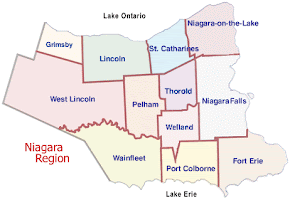As the Niagara Region remains under a Winter Storm Warning for the next 2 days, until Thursday February 3, 2011; it seemed appropriate to provide the following information.
February 1, 2011 - 1:45 p.m.
Current conditions - St. Catharines; -6'C or 20'F -- feels like -14'C or 7'F
Current conditions - Port Colborne; -7'C or 18'F -- feels like -16'C or 3'F
Temperatures are expected to get to 18'F (-7'C) and feel like 1'F (-17'C) during the storm
Horses, whose skin temperature is about 30oC, will lose heat to the air around them whenever the air temperature is below 30oC. The colder the air around the horse, the greater the heat loss will be. The main source of heat gain is the energy (calories which convert to heat) obtained from feed. Other minor sources of heat gain are muscular activity, the sun and mechanical heat in barns.
Thermoregulation in Cold Weather
Horses respond in two ways to cold: acutely (immediately) and chronically (adaptive or acclimatization). The immediate response of a horse to a sudden change in temperature is to change its behaviour.
- Horses will seek shelter from the cold and wind, or huddle together, to decrease heat loss.
- Horses stop foraging and stop moving to conserve energy.
- Horses in cold, windy conditions typically stand with their heads away from the wind, their tails set low and into the wind.
- Shivering and other voluntary muscular activity can generate substantial body heat. The muscular contraction involved in physical activity, such as running, results in heat production.
- Horses will also vasoconstrict (reduce) blood flow to the extremities, such as the lower legs, the ears and the muzzle
- Their hair will stand up (piloerection) to effectively increase the haircoat depth.
Horses exposed to constant chronic cold weather acclimatise to the cold. Typically, horses require 10 – 21 days to adapt to cold. For example, a horse kept at 20°C and exposed to temperatures of 5°C will adapt to temperatures of 5°C over 10 to 21 days. When the temperature drops to – 5°C, the horse will need another 10 – 21 days to adapt to this increasing cold. This process continues up to –15°C, which is the lower critical temperature (LCT). Once the LCT is reached, physiological changes and human intervention, such as shelter and/or extra feed, are needed to help the horse cope with the cold.
Energy intake, is the most critical in determining how readily a horse develops a tolerance for cold. Horses lose weight if they do not eat enough energy to offset the heat loss to the cold surrounding air. Enough feed and good-quality feed are needed to supply adequate energy intake for the horse.
Yearling horses fed a high quality diet free-choice are able to tolerate temperatures as low as -11°C with no ill effect. Horses will generally eat to meet their energy requirements. In cold weather, feeding good quality hay free-choice is the simplest way to ensure that the horse will meet its energy requirements.
Management Suggestions;
feed horses high quality hay (their bodies create heat from the digestion process -- grain will not create the same effect) ~ make sure the horse is capable of processing the hay and utilizing it -- deworm and float teeth regularily
if horses are fed as a herd outside; make sure there is enough hay piles + extras; often timid horses will be forced away from the food by the more dominant members and simply give up eating
provide shelter -- a 3-sided shed can help a horse conserve up to 20% more body heat than horses in an exposed area -- straw bedding will also help conserve heat (a horse that lies down is able to reduce surface area heat loss by 20-25%)
provide clean water -- preferably not cold -- use bucket heaters to keep water from freezing -- forcing a horse to consume snow to satisfy water requirements is a huge energy drain as the horse's body has to use energy to raise the temperature of the snow -- the energy drain; plus lack of proper hydration can lead to an impacted gut.

Precaution is the best prevention; keep an eye on your animals, feed them well and often and stay warm out there.




